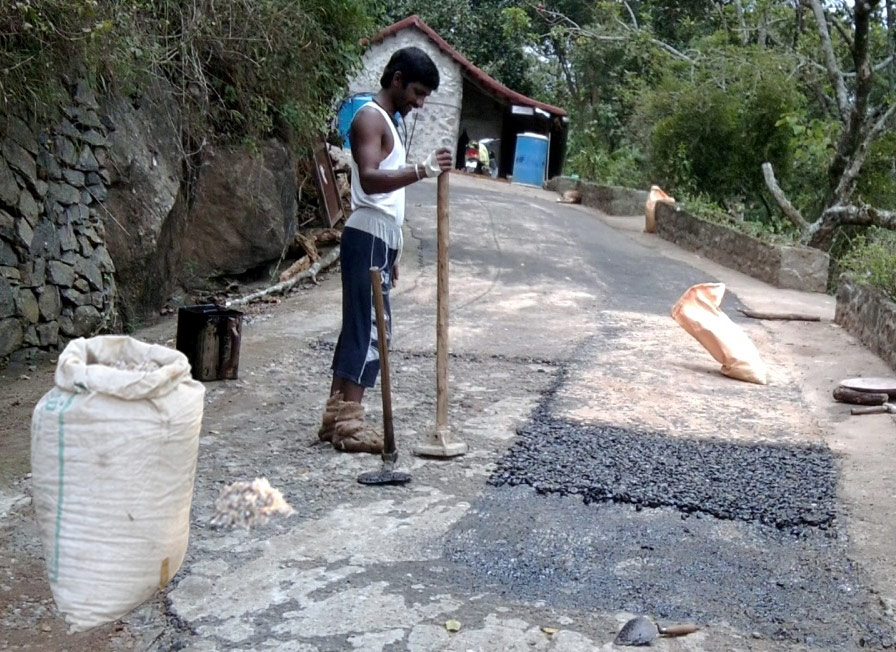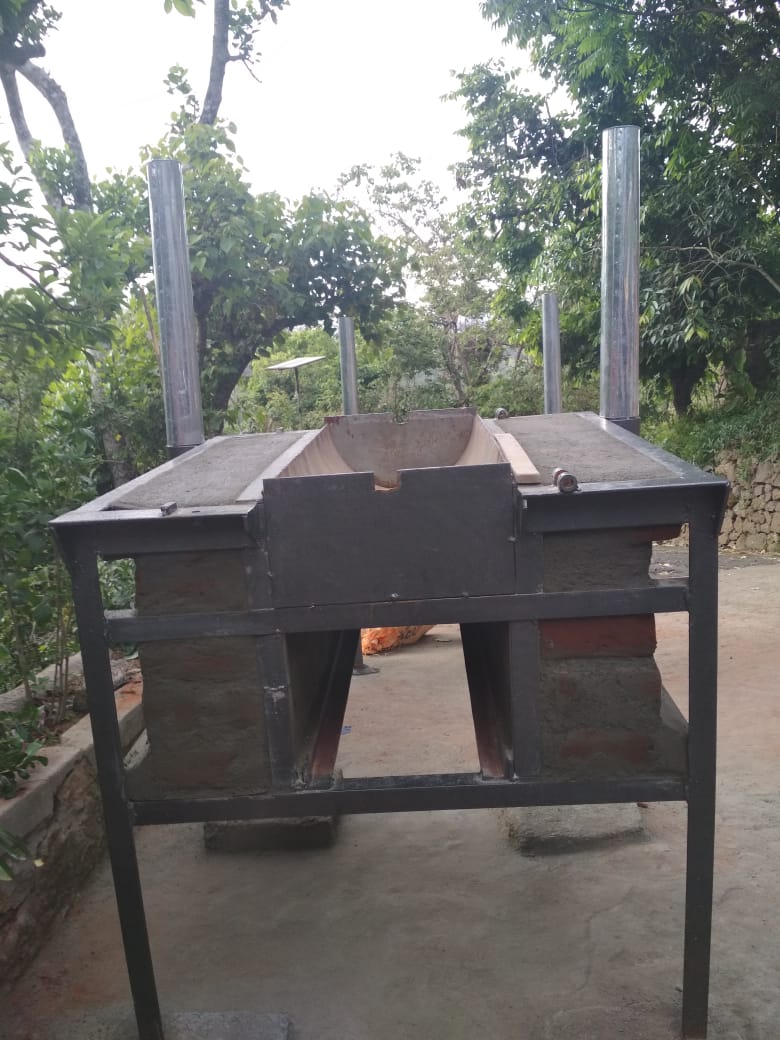|
This is a continuation of: “What can “I” do about Global Warming?”

4 years ago we relaid a section of the campus road. Shredded plastic (on L) is being incorporated.

Have you seen “Blue Planet 2,” compered by David Attenborough? David Attenborough is one of many scientists who are deeply concerned about this “Anthropocene,” the geological time period during which, human behaviour is having a devastating effect on Climates, on Nature and Planet Earth.
A hundred or so years ago, most human waste or rubbish, when thrown away, defecated or disposed of, disappeared fairly quickly into the ground, consumed by micro-organisms, ants, worms, cockroaches and other animals. In “Blue Planet 2” we learn that every year, 8 million tons of non-biodegradable plastic are being disposed of in our oceans.
The Wandering Albatross Chick
If you don’t cry when you see the “Wandering Albatross Chick” being fed by its parents with fish but also with pieces of waste plastic, then you are a hard-hearted person. I take that back, because some of us don’t cry but we are still deeply troubled when we come to know that some of the chicks die because their stomachs are full of plastic. This is just one story from Blue Planet 2, which I trust will make you think deeply that we must act to radically reduce our consumption of plastic.
The Recycling Room
From 1989 to 1999, when Sholai was a day school, there was almost no plastic in our Recycling Room. However biscuit packets, paan packets and bread plastic bags etc., could be seen within and all around the local villages. Once we became a residential school, the famous consuming middle class descended on us and we began to accumulate “Hard” and “Soft” Plastic. It should also be said that in order to feed the students and staff, the kitchen had to purchase food which was packed in plastic. As Anil Agarwal (the founder of the “Centre for Science and Environment” and “Down to Earth”) told me: “plastic is a very useful product.”
Hard and Soft Plastic:
Now, you need to understand the difference between Hard and Soft Plastic. It will be good if you learn about all the different types of plastic, but the most important distinction is this. “Hard plastic” can have caps and threads in it. E.g. water bottles, broken buckets, HDPE pipes..... etc.. It is recyclable. Soft Plastic is soft and thin plastic which cannot be recycled.
So what can “I” do about plastic?
- Create a Shed or a Room where you can store Hard Plastic. Find out who locally will buy it from you. It is like the Stock Market, the price can go up and down. Don’t bargain or quibble too hard. Your local recycling merchant is doing a great job, be supportive and encourage her or him. Don’t give her dirty hard plastic, don’t try to include soft plastic in the deal. If you do, he will throw it into the nearest stream or river, after which it will make its way to the ocean. Alternatively it will go to a land-fill or create a waste plastic mountain. They are there in Delhi, Mumbai and other Metros, where piles of plastic are burning, producing toxic fumes as well as greenhouse gases.
Global Warming?
In case you are wondering what is the wider impact of Plastic on Global Warming, if you are concerned to make a difference, you need to be aware of all the different technologies that surround us. Most of them require Electrical Energy to make items. Electricity derives from burning coal and oil, these produce carbon dioxide and other greenhouse gases. A small percentage derives from nuclear energy and Renewable technologies such as Solar and Wind. These technologies produce much less greenhouse gases.
So when you buy a plastic bucket, be aware that energy will be required to make it. Had you bought a galvanised bucket or a stainless steel bucket more energy would be required to make the bucket in stainless steel or galvanised iron, but the bucket will last a much longer time, it can even be welded if required. So, as a principle, avoid “Use and Throw items”.
Soft Plastic:
There are three things we can do about soft plastic.
- Shred it:
First it must be completely clean. Then you need to shred it in a shredding machine, which breaks it up into pieces of plastic of 2.5 millimetres. Plenty of research has been done by Professor Vasudevan of Tyagaraja College in Madurai and Professor Justo of Bengaluru to coat the stones, which are used to make our roads, with plastic. The darker grey stones will then be coated in tar and laid and rolled (or compressed) to make our black-topped roads.
You will need to investigate as to whether anyone is doing this “Plastic into roads” process near to where you live. If so, join with them, this is a good solution. If not then form a concerned group to dispose of soft plastic in this way.
At Sholai School we have designed two manual appropriate technology machines to heat the stones to 130°C prior to being coated with shredded plastic and to mix the stones with melted tar prior to being laid and compressed on the road. (See photo).
 The Plastic-Stone Mixing Machine, the last stage of construction.
The Plastic-Stone Mixing Machine, the last stage of construction.

- Convert plastic to fuel:
Here and there in India there are Universities, Colleges, Companies and Private individuals who have designed plants, some large: converting, for example, 3 tons of plastic a day. Some are small, converting, for example, 15 kilos of plastic a day. We need to encourage such research and such efforts and establish this as a serious solution to the terrible quantities of plastic surrounding us and in the seas.
- Be Abstemious and/or use Bio-degradable Plastic
Be strict and use as little plastic as possible. This is a good solution but we cannot ignore the fact that plastic is a very useful material especially for the transportation of food and assisting the lives of poor people. Bio-degradable Plastic is obviously a new and interesting solution, but we need to know more about it and how it is processed.
|






